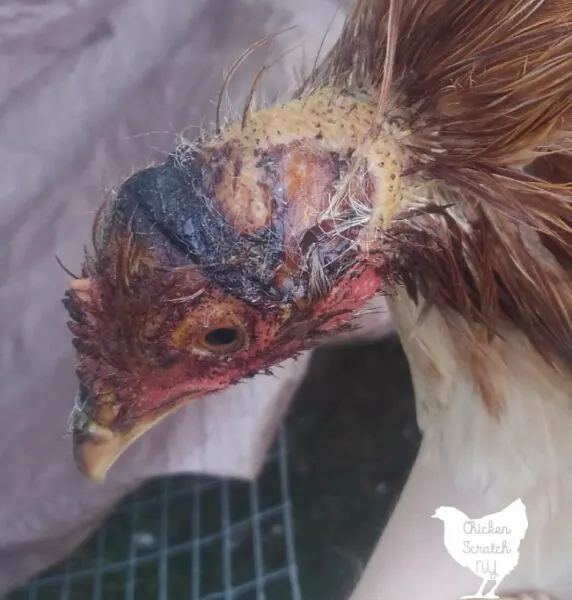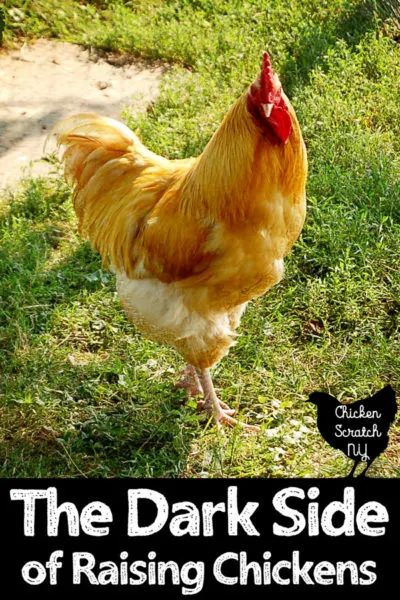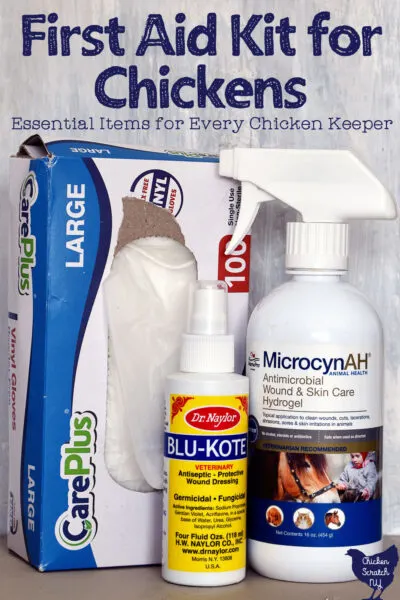Culling chickens is a necessary but challenging aspect of responsible chicken keeping, ensuring the overall health, welfare, and productivity of the flock. Here are four reasons and two methods to consider.

If you raise chickens long enough the time will come when they pass away, sometimes they need some help with that transition and that’s when it’s time to cull. It is one of the worst parts of chicken keeping but it’s also necessary.
It really is a numbers game, the more chickens you have the more opportunity you’ll have for freak accidents or health problems. If you have a small flock of birds kept more or less as pets you may never have to deal with this.
But if you’ve got dozens of birds running around, sooner or later it’s going to come up, and when it does you should know what to do.
I don’t enjoy culling but I can say I’ve never regretted it. If anything, I’ve regretting waiting too long.
Reasons to Cull Chickens
Culling has several definitions but they all more or less mean the same thing, removing (aka killing) an animal for a purpose.
There are several reasons to cull birds and they may or may not apply to you. It’s important to remember that people keep chickens for different purposes and that affects how they manage their flocks.
Health
This is the main reason I cull birds and it’s likely the one you’ll have to deal with. It is important to remember that chickens are not people and death is not always the worst outcome.
Chickens are prey animals, they hide illnesses and injuries very well and it’s not uncommon for you to completely miss that there is something wrong until it’s too late to help.

In my experience, injuries are easier to treat than illness. I’ve seen some horrific wounds heal with barely a trace left.
Read more about Chicken Wound Recovery
There are also health problems that you can manage but not cure, like ascites or water belly, a condition where the bird’s abdomen fills with fluid. You can drain the fluid but it will come back and press on the organs causing discomfort and eventually death.
A quick death is better than starving to death.
When it comes to health problems, I’m more likely to immediately cull roosters than hens. The pecking order is brutal in general but it’s especially hard of the boys.
Aging hens are usually left alone but old roosters really get kicked around by the younger men. I can usually tell when my roosters are aging out because they’ll start hanging around the front of the house away from the majority of the flock.

An old rooster with a health problem? Unless you plan to build him his own pen and baby him it’s much better to cull.
Do you Need a Rooster in Your Flock? Find out
If my hens show signs of being off I’ll usually quarantine them away from the flock and keep an eye on them for a few days to see if they’re getting better.
Behavior
This is a rare reason for culling in my flock but it’s happened a few times. I have two young kids that have grown up on the farm and I have a zero-tolerance policy for aggressive roosters.

Attack my kids and you don’t have a head anymore.
Some people try to rehome aggressive roosters but that just doesn’t sit right with me. My neighbor’s son almost lost an eye to a rooster spur and I could never put someone in that position, I have enough guilt in my life.
Other behavior-related reasons for culling include bird-on-bird aggression, egg-eating, and chick murder.
Breeding
Breeding animals is hard and there is no way around that. I have a lot of respect for the people that produce the birds I love and I do not envy the difficult choices they have to make.
Breeders may choose to cull animals with physical defects or birds that don’t fit the breed standard.
Production
If you’re raising birds as a business there comes a time when the amount of money you’re putting in (feed) is greater than the amount you’re getting out (eggs). Depending on the breed of chicken that might be after a year or two.

I let my elderly women retire but I’m also not running my flock as a production-based business and I can’t judge the people that do.
In the end, those birds have likely lived a much better life than they would have in a commercial battery cage.
It’s also worth noting that the hybrid layers most often used for egg production have a quicker life cycle than heritage breeds. They mature faster, lay a lot of eggs quickly, and burn out.
Learn more about Hybrid Layers & Sexlink Chickens
Their quality of life often takes a nosedive when their productive years end and they’re more likely to have health problems like water belly.
Humane Ways to Cull Chickens
When it’s time to cull you want it to be humane and as fast and painless as possible. The two methods I’ve used cause decapitation, one internal and one external and they’re traumatizing for different reasons.
The Broom Stick Method
If done correctly this method causes internal decapitation, the head disconnects from the body breaking the spine and ending the chicken’s life.
You’ll need a sturdy stick of some kind, a broomstick works but you can use just about anything.
Lay the bird on the ground, extend the neck, and place the broomstick over the neck below the skull. Stand on the broomstick (not enough to squish the bird but firmly enough that the head won’t slip underneath it), hold the bird’s feet, and quickly jerk away from the broom.
You’ll feel a pop, which is the worst part of this method, and the bird with start to twitch and flap around for a short time.
If jerk too hard you can pull the whole head off (ask me how I know that…), there is definitely a sweet spot that you’ll only figure out by doing.
Beheading
The second method requires a blade, I use a machete but you can also use the classic hatchet. I think the longer blade on the machete makes it easier to hit your target without hesitating.
This is external decapitation and there will be blood, sometimes it’s even flung around as the bird goes through its final twitches.
This is my preferred method; accidentally popping off a rooster’s head with a broomstick and the physical memory of that ‘pop’ is much harder on me mentally than a quick thud with a blade. I’m also not bothered by blood, if you are you’ll be happier with the broomstick.
Roosters have a lot of extra feathers around their necks (called hackles) and they make it harder to behead them than a hen. Make sure the neck is extended and don’t hesitate when you bring the blade down and you should be good.
Handling Culled Chickens
Now you’ve got a dead chicken on your hands. I usually bury my birds in the woods because I have the space and I’m big on the natural cycles of life, death, and decomposition.
Keep in mind that they can attract raccoons and other wildlife so be careful about where you bury them.
The only exception I make is for sick birds that die of unknown causes. If there is any chance the birds died of something contagious I’ll double bag them and put them in the garbage.
I rarely have unknown causes, if I’m not sure what’s wrong I’ll do a necropsy to look for a reason. It’s not always necessary but it can help clear up any unanswered questions.
Once I found out my turkey hen died from eating a sewing pin when I pulled her gizzard out and it stabbed me.
I hope this information is helpful and I hope you never need to use it but chances are if you’re reading this you do and I’m sorry. It’s hard to say goodbye to your animals but you’re doing the right thing.
Looking for more information? Check out my Chickens page or start here:




Kris
Wednesday 26th of June 2024
Thank you. My sweet prisilla was egg bound and I found her too late to help. I just learned about a kill cone and was able to help her transition as she was doing so poorly. Knowing that she was not going to suffer thru another night helped ease the sadness of me having to cull her